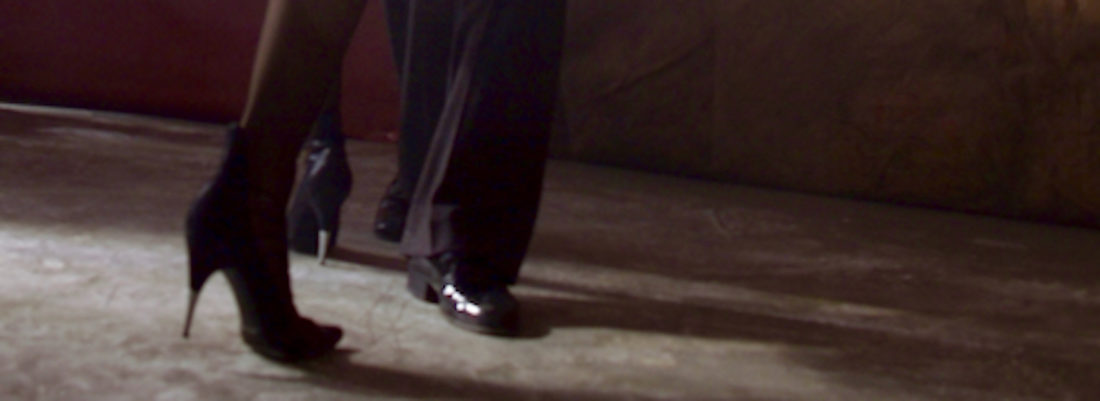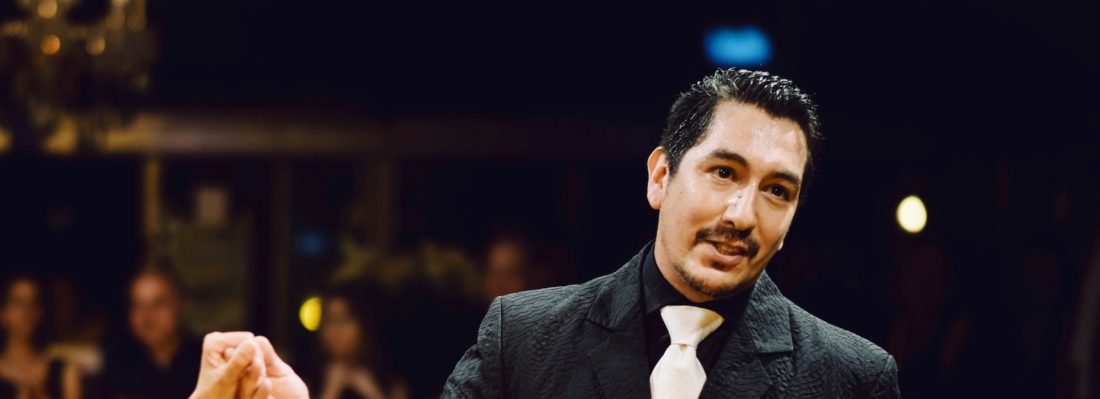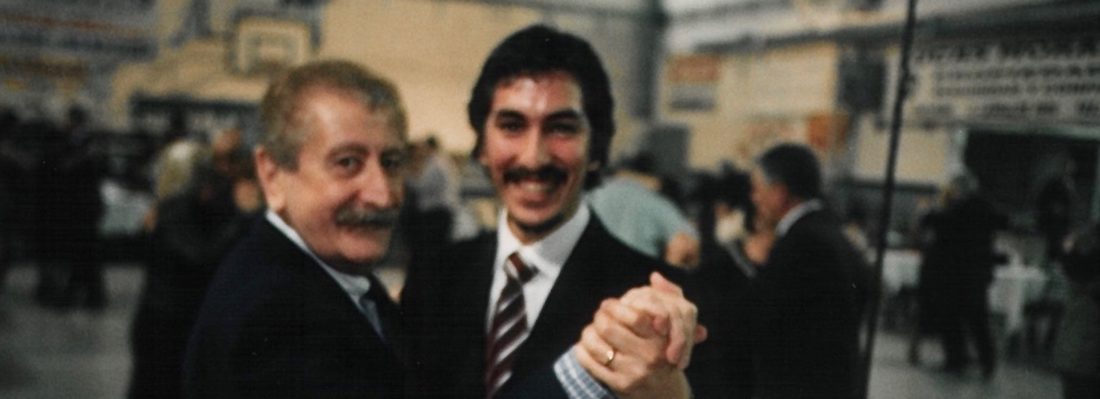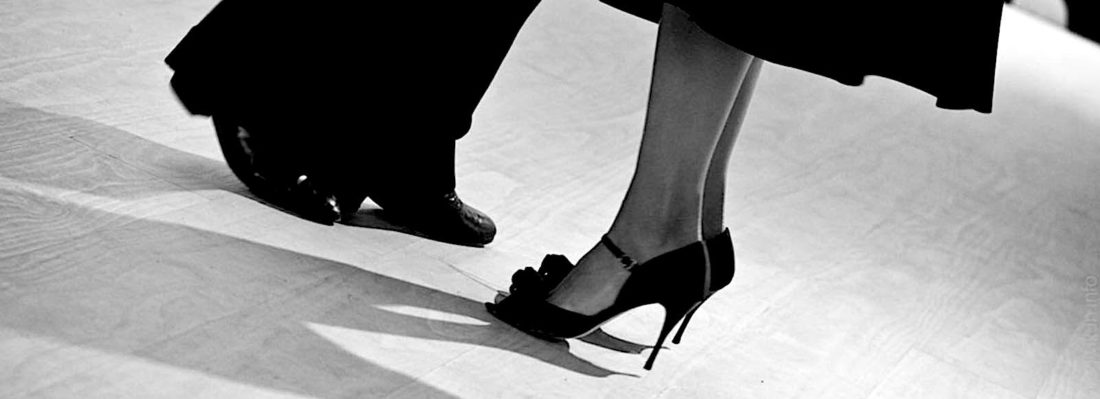26. February 2018
In
Uncategorized
By
Chiche Núñez
The question of the right shoes for dancing tango is and remains very topical.
There is an immense range of different manufacturers of shoes, all of which present themselves as specialists in tango shoes; Nevertheless, it is worth asking which basic properties you should consider for a suitable tango shoe.
I will take a detour and use the results of my personal experience to name the properties that make a tango shoe more suitable.
My first recommendation
At first I didn’t have any usable shoes to dance to. I used either sneakers or regular rubber-soled street shoes. At some point I noticed that many had “dance shoes”. At that time, the concept of dance shoe was not clear to me.
I started asking where I could get a pair of tango shoes. Back then there was only a small selection of such specialized manufacturers in Buenos Aires. I got a recommendation that has stayed with me all my life.
I had made the acquaintance of a gentleman who was a milonguero. He went to a lot of milongas, danced a lot and did a normal job. So he wasn’t a professional dancer and didn’t want to become one. Nevertheless, he had high demands on his dance, his demeanor and appearance.
When he heard that I was looking for shoes for the tango, he gave me a recommendation. He recommended that I buy a pair of leather street shoes with little frames along the soles of my feet. He gave three reasons for this:
First, you can walk on the street with it. Shoes were made for it. I come to the milonga, don’t have to change my shoes and don’t have to touch my feet. Second, you can dance comfortably with it for a long time. Because the purpose of good street shoes should be that you can cover long distances with them. And thirdly, your shoe should have little edge in order to be able to dance as precisely and sensitively as possible close to the lady’s foot. That’s how I bought my first oxford shoes. I wore these shoes for years.
Omar Vega
I remember a great role model who later became a good friend of mine. It must have been in 1997 when Omar Vega invited me to his table in the “Regin” milonga. I received a lot of good advice from him, but once he suddenly said to me: “A shoe has to fit the foot like a glove”. It was one of those sentences that can mean anything, but in the end are meant very precisely and literally.
The explanation of the sentence is almost more important than the sentence itself. It took me a good ten years to understand this sentence in its full meaning. I was helped by the countless side conversations about shoes with experienced tango dancers such as “El Chino Perico”, “El Nene Fo”, “El Turco José”, just to name my most important role models.
What the sentence means is that the shoe has to fit snugly around the metatarsal joint so that the foot doesn’t slide forward and put pressure on the toes. You always need air at the tip of your foot. Lace-up shoes are a very practicable variant, but definitely do not exclude slippers or boots for tango dancing. The shape of the shoe should only be more precisely adapted to the foot than with the lace-up shoe.
Roberto and the technology
At the beginning of my tango lessons I was once in the studio “La Esquina” of Vanina Bilous and Roberto Herrera for a group lesson. I was offered a look at a pair of shoes designed as tango shoes. They had a chrome leather sole. I was told the fantastic properties of this shoe in comparison to ordinary leather shoes. In particular, there was talk about the slip resistance of chrome leather and how much these shoes can adapt to the foot. You have to brush them regularly so that they don’t lose these properties. I listened to that with a lot of enthusiasm, of course, and I still remember my first chrome leather shoes. They were just beautiful and very comfortable from the start.
Today I think that the choice of a chrome leather sole remains a very personal decision for every social dancer. You can’t walk on the street in such shoes, they lose shape much faster than a leather sole shoe, they offer much less support, and are more suitable for certain dancers who don’t need a shoe with a long lifespan. E.g. professional tango dancers.
Again I thought of the sentence:
“A shoe sits like a glove on the foot …”
At first glance you can see: in a soft shoe you immediately feel comfortable. This is the case with many tango shoes. But soon the disadvantage becomes clear: The initially comfortable material continues to work and becomes so soft that the shoe will soon no longer be able to hold the foot as it should.
The other option is shoes with a firmer material; a leather sole as a base and more inding upper to create a slightly firmer feeling. These shoes adapt more slowly to the foot, but in return they stabilize when the shape of the foot is found. Leather shoes usually expand well laterally. However, it is important that the tip of the foot always has some air, because the shoes hardly or not stretch in length. Newly purchased shoes are best wearned several times a day for short moments until they give way in their shape and adapt to the foot. In the meantime, you dance with the old shoes. At some point, the new ones lie comfortably on the foot and will then sit like a glove.
El Turco Josè
El Turco José loved brown and cordless shoes… y El Taquito Militar! When I met “El Turco José”, one of the first things that captured my attention, was his shoes. At that time I didn’t know that he should become my role model for everything I wanted to do with tango. He was wearing cordless, light brown street shoes! What was so special about it? Undoubtedly, no shoes with laces. That set him apart from everyone else. Nevertheless, his way of walking was familiar, elegant and of sophistication. After we got closer to each other, he recommended shoes with higher heels. There were “Taco Francés” and “Taco Militar” to choose from, both of which I tried. Personally, however, I feel safer with the latter – i.e. the military sales. It can be up to half a centimeter higher than the “Taco Fracés”, with the base being narrower and lighter. I developed a lightness with the higher heel; although the habituation process took some time, I soon felt very comfortable in such shoes.
An important statement of Josè was also that you have to learn to walk comfortably on the street in the shoes in which you dance, only then can you master your shoes.
Heels are a big topic for the ladies! Especially when the fashion changes! A particular shoe shape is usually designed according to the height of the heel. Unfortunately, at the “Tangomarkt” I always discover women’s shoes with inappropriate heel height, which causes the entire stability of the body and its joints to suffer. It is quite certain that a paragraph must be resilient and stable. But only a few dance shoes that have been developed for other types of dance such as standard / Latin are suitable for tango, because their heels are not sufficiently resilient.
When we talk about heels, I would like to take a quick look at the women’s shoes…
Las Milongueras del 40 y 50
Before the founding of the Comme il faut, it was rather unusual for women to wear sandals to dance. One reason was certainly that in the places where tango danced with a claim, the proximity to the feet was sought. It is understandable that despite all the precision, a certain protection for the toes was hit.
“Dance shoes” did not use ladies, but quite normal, strong shoes, which are comfortable, and suitable for tango dancing. Rarely, on a dry day in summer, you could occasionally see sandals. The women’s shoes were closed or perhaps provided with a small opening at the tip, which gave the feet great protection. Of course, every lady wanted to be apart and not wear the model that can be seen on many feet of dancers – possibly on the same evening.
After an intensive exchange with colleagues and dancers, I realized that the basic characteristics for good tango women’s shoes are the same as for men’s shoes: protection and stability, height and adaptation and, of course, timeless beauty!
In my mind, I often see a beautiful couple that is unique and that was indispensable in the milonga scene of Buenos Aires:
El Nene Fo
I remember that we were on our way to Club Sin Rumbo with El Nene and his wife Carmen. I did not miss his beautiful shoes, which differed from their production from all other tango shoes on the market. Bourdeaux colours! Beautiful!
Do you like them? He asked me. Yes! I said, but where did you get them from? From the shoemaker of my neighborhood, of course! Said he.
At that moment I realized that both he and Carmen knew nothing about anything like tango shoes.
But both wore very nice and comfortable shoes, with which they danced for a long time, came and went. Undoubtedly, shoes are a decisive thing in tango! We should work with it, not try to escape it. So does a man or woman need official “tango shoes” to dance tango long and comfortably? Definitely, no!! So-called tango shoes, if they are of high quality, certainly offer a number of features that make a shoe usable for tango.
I hope to have inspired you through my memories to think about your shoes and the health of your feet. One’s own experiences and feelings cannot be replaced by the blind purchase of expensive models of the currently trendy brands. Stability and protection, paired with taste and individuality, make a pair of shoes a treasure of endurance.





